Peggy's Weather Report from Blueberry Campground:
*Time: 7:41 am
Temperature: 10.4 C 50.7 F
Humidity: 76.5%
Wind: in protected area
Clouds: Stratocumulus
Cloud Cover: 75% broken
Light level: 391 X10 Lux
*
We got up at 6:00 am for breakfast. The plan for the day was to go to two lakes in the area, Robe Lake and Ptarmigan Lake, chosen because they had characteristics the team was looking for and to return to the campground tonight and do long cores tomorrow. This plan was the alternative to flying to Allison Lake to take long and short sediment cores. So we set off for Robe Lake near Valdez and not far from our campground. There the team set up the boat, and prepared all the equipment for taking bathymetry readings and collecting short sediment cores.
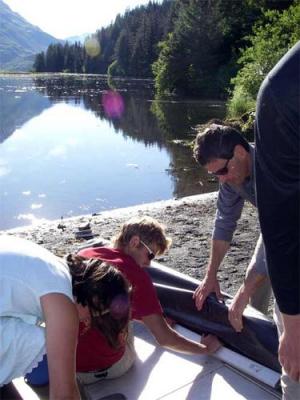
Chris and I took water measurements. This lake had fish and a variety of life including leeches; you could see hundreds of minnows at the edge of the water. There were a few float planes parked at a wharf on this lake.
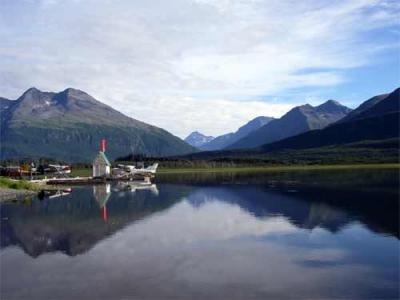
Robin the Viking took GPS readings this morning to mark our location.
GPS: Robe Lake Latitude: 61.07270 N Longitude: 146.16334 W Elevation: 0 m
Water conditions at Robe Lake: pH: 7.53
Temperature: 17.1 C
Conductivity: 105 microSiemens/cm
The team checked out topo maps to discuss where to core.
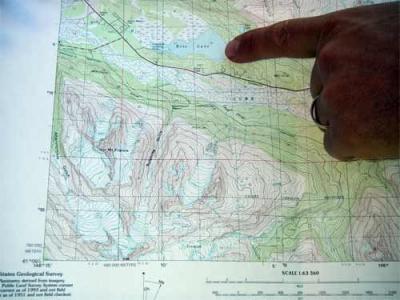
The six of us, Dr. Kaufman, Caleb, Heidi, Chris, Robin the Viking and I took off in the inflatable boat and trolled around taking bathymetry measurements so a bathymetry map of the bottom of the lake can be constructed from the bottom depth measurements.
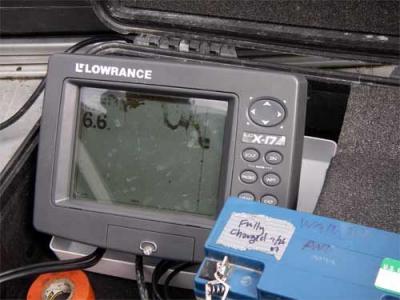
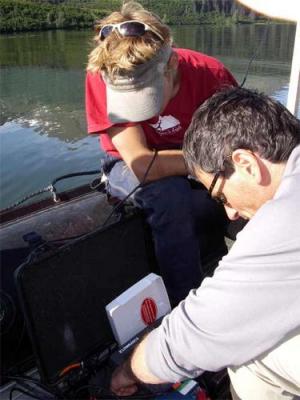
Robin took a GPS reading of the lake location for us.
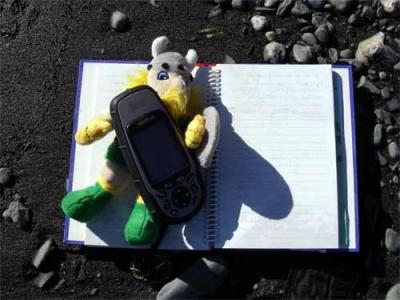
Next the team set up the short coring apparatus to collect a short sediment core from the bottom of the lake. This requires a coring apparatus attached to a coring tube, about 15 cm in diameter. A second rope is attached to a weight called a hammer, which fits onto the core apparatus rope so that you can slide the hammer up and down to hammer the core into the sediment at the bottom of the lake. One person does the coring and two other people manage the ropes as the device is lowered to the bottom of the lake. The corer lowers the ropes until he feels it touch the bottom. Then, holding the coring apparatus upright, he lifts the hammer rope to slide the hammer up the rope and then lets the hammer go, so that it pounds the core into the sediment. He hammers again and again. After hammering, the corer lifts the coring ropes up together and the other two people reel in the rope lines. When the coring device gets to the surface someone reaches underwater and places a piece of plastic that looks like a hockey puck into the end of the tube so the sediment does not drop out. The core is then brought into the boat and examined. It has to be carefully packaged to be sent back to the university for analysis. After a couple of cores were taken we went back to shore.
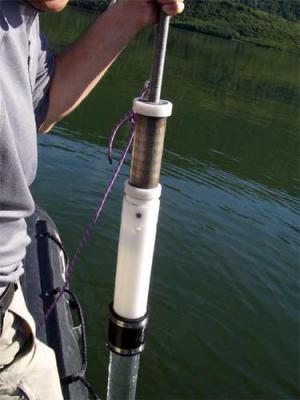
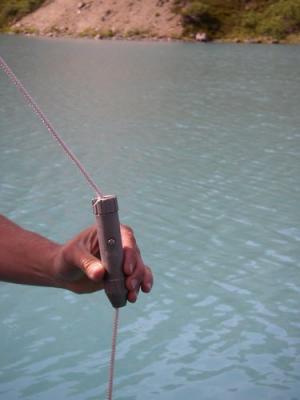
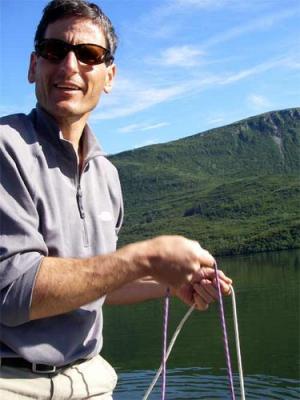
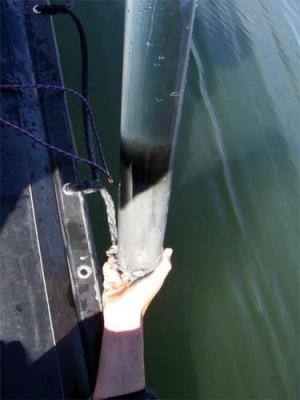
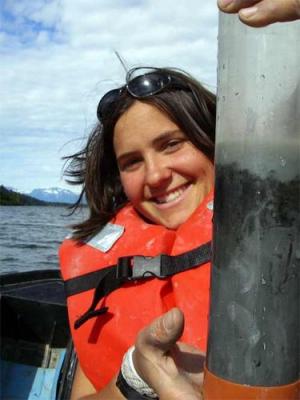
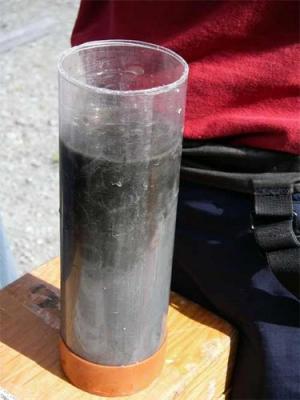
There was an ambulance on shore with two medical personnel waiting by the float plane dock. While the team was processing the core, a float plane flew in with a man who had a heart attack while working on a fish processing boat in the Prince William Sound. They transported him to the ambulance and left for a Valdez hospital. The float plane pilot took off again.
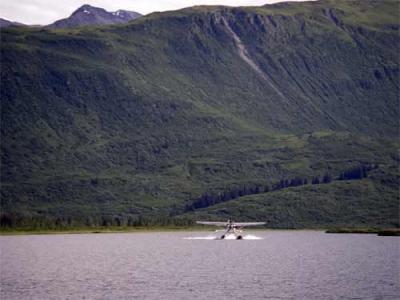
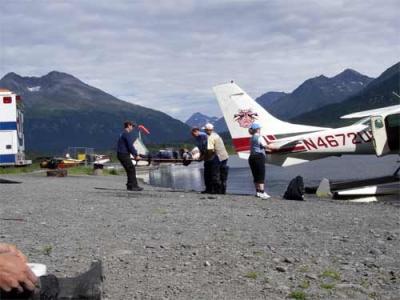
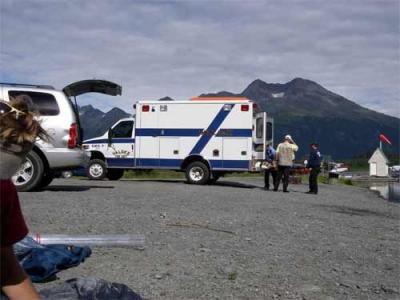
On shore the team prepared the core tube by first cutting it and then draining the top by suction, followed by placing floral foam on the top to hold in the sediment.
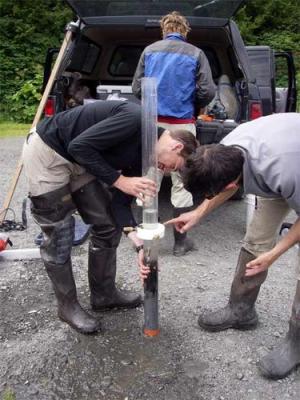
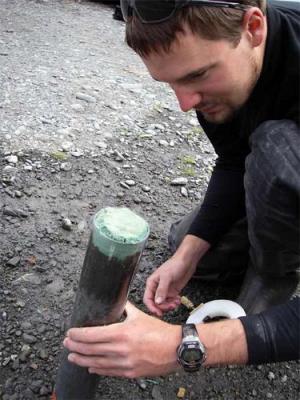
Heidi, Caleb, and Dr. Kaufman went back out to get another core not far from shore. Once that core was processed we had lunch, took the boat apart and packed up.
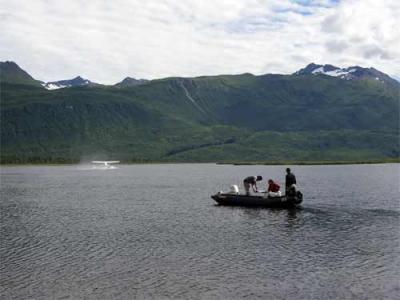
We drove the truck to another lake the team had chosen to study, Ptarmigan Lake. The boat was assembled again and the team set out to do bathymetry readings followed by taking short cores. They asked me if I wanted to collect the core, and of course I said yes. So with team direction I took my first short sediment core at Ptarmigan Lake!!!
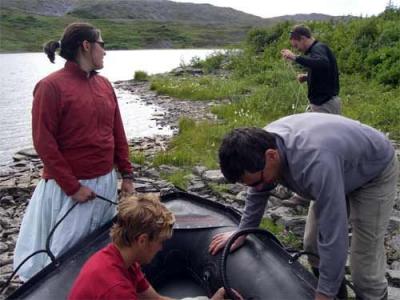
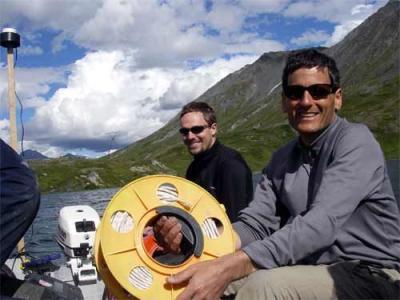
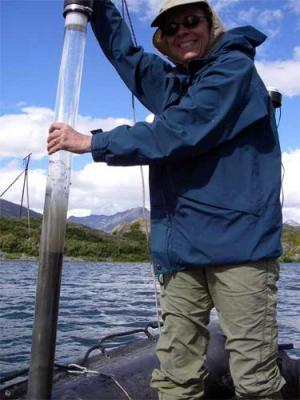
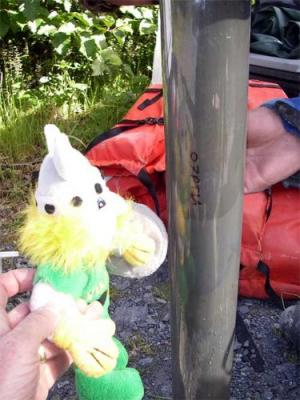
After processing the short cores on shore the team decided they wanted to do a long core at this lake tomorrow. That would require assembling the core platform on a pontoon boat. It was decided that two team members would spend the night at the lake to protect the equipment and the others would sleep at the campground. So we all returned to the campground, prepared and ate dinner. Heidi and Caleb took off to camp near the boat at Ptarmigan Lake and the rest of us retired to our tents for the night (of course it was still light but 10:30 pm).

